Mummified ‘aliens’ found in Peru have 30% DNA of an ‘unknown species,’ new analysis claims
>
The ‘alien’ mystery in Mexico deepens after analysis claimed the DNA of tiny bodies was not human but from an ‘unknown species’.
The National Congress has been a circus over the past two months, with journalist Jaime Mosan, a controversial UFO enthusiast, in court several times to prove that mummified remains found in Peru are extraterrestrial life.
In his final attempt, Mosan sent a team of researchers who ran a DNA analysis on the numbers that showed 30 percent “Not of any known species” and stated that the figures were “real” and consisted of a single skeleton.
The other 70 percent has not yet been revealed.
DailyMail.com revealed that a UFO expert who dealt with the small objects suggested that humans put them together, and the pair could have been created from now-extinct animals 1,000 years ago.
Mexico’s ‘alien’ mystery deepens after analysis claims DNA of tiny bodies is not human but from ‘unknown species’
“This is the first time extraterrestrial life has been presented in this way,” Mosan told Congress.
We have a clear example of non-human specimens unrelated to any known species on our planet.
“The public has a right to know about technology and non-human beings. This reality unites humanity and does not divide us. We are not alone in this vast universe; we must embrace this truth.
Musan added that the two bodies are present The bones are strong, toothless, and contain implants made of soft, translucent white cadmium and bluish-white osmium – elements that are rare on Earth.
It was revealed in September that 30% of the DNA was unknown, but claims of an unknown species had not emerged until recently.
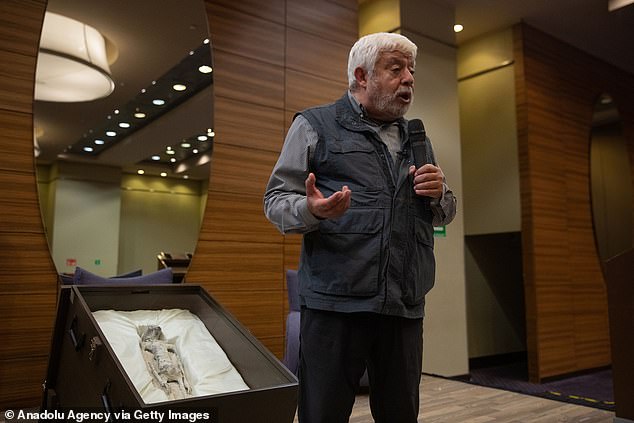
The country’s Congress has been a circus over the past two months, with journalist Jaime Mosan, a controversial UFO enthusiast, taking to court several times to prove that mummified remains found in Peru are extraterrestrial life.
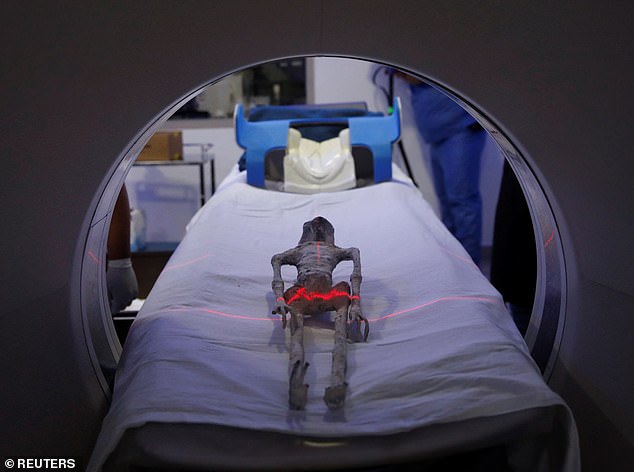
These figures were subjected to carbon dating by the National Autonomous University of Mexico (UNAM), which determined that the bodies had three-fingered hands, had no teeth, and were more than 1,000 years old, Mosan claimed.
The figures have been carbon dated by Mosan claimed that the National Autonomous University of Mexico (UNAM), which determined that the bodies had three-fingered hands, had no teeth, and were more than 1,000 years old.
“These samples are not part of our terrestrial evolution,” Mosan told Congress in September. “These are not objects found after UFO debris.”
“They were found in diatom (algae) mines and were later fossilized.”
He later added: “We don’t know whether they were aliens or not, but they were intelligent and lived with us.” They must rewrite history.
“We are not alone in this vast universe; We must accept this reality.
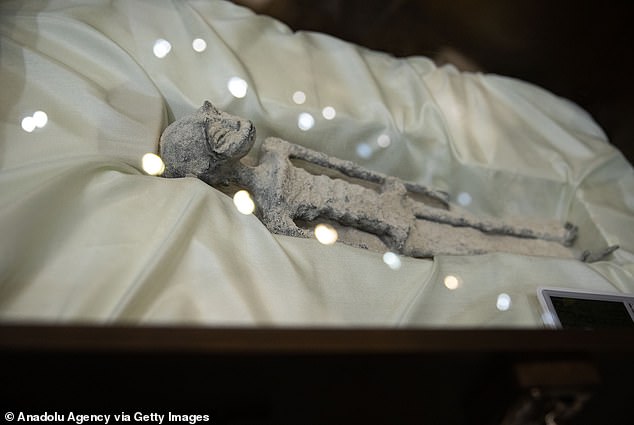
Mosan said that the two bodies had strong bones, were toothless, and contained implants made of the soft, transparent white metal cadmium and the bluish-white metal osmium, which are rare elements on Earth.
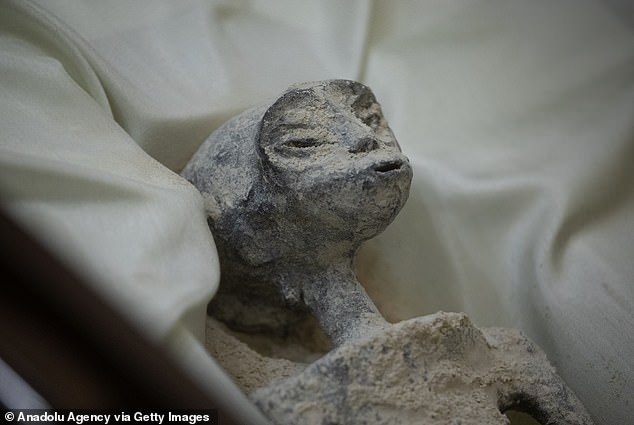
Experts also noted that their DNA was hybrid, suggesting that the bodies were human descendants
Earlier this month, Mossan received a series of doctors who all said the bodies were those of real organisms, with some experts claiming to have studied “five similar specimens over four years”.
Experts also noted that their DNA was hybrid, suggesting that the bodies were human descendants.
“We have a hybrid organism, and we have other organisms that appear to be more advanced than us,” Mosan said. “We are facing something truly extraordinary.”
While Mosan and his team declared the mummified bodies, named Clara and Mauricio, “real,” experts had no origin story and did not insinuate that the bodies were “extraterrestrial.”
At the hearing, he focused on proving that the bodies were not fake by providing insights from medical experts.
“None of the scientists say (the study results) prove that they are aliens, but I go further than that,” he said, noting that they may be evidence of the existence of non-terrestrial life forms.
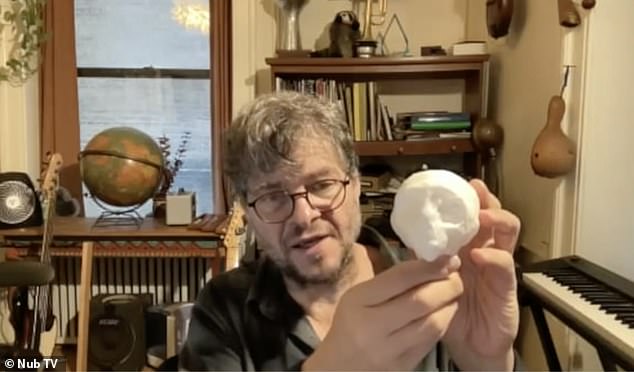
Ufologist Will Galison – a close friend of the archaeologist who first analyzed the supposed “aliens” – said he believes the “corpses” are 1,000-year-old dolls.
Mosan brought a team of medical experts who carried a letter signed by 11 researchers from the National University of San Luis Gonzaga in Ica, Peru, announcing this.
“There was absolutely no human intervention in the physical and biological makeup of these creatures,” anthropologist Roger Zuniga of the National University of San Luis Gonzaga in Ica Peru said on Tuesday.
However, the letter clarified that the team was not insinuating that the bodies were “extraterrestrial”, but did not answer the source of the remains.
Argentine surgeon Celestino Adolfo Bioto also took the stand, claiming to have reviewed the results of tests performed on the cadavers and presenting the curious case that they “were an evolved version of today’s humans, describing them as ‘our descendants’.”
But ufologist Will Galison – a close friend of the archaeologist who first analyzed the supposed “aliens” – said he believes the “corpses” are 1,000-year-old dolls.
They may have been made from animal remains from thousands of years ago, perhaps for ritual purposes, with the heads bearing a “remarkable resemblance” to alpaca skulls, Galison said.
(Tags for translation)dailymail
